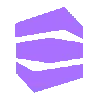Schema of JSON Rich Text Editor
The JSON Rich Text Editor (RTE) organizes its data into blocks and spans, ensuring a clean and structured JSON output. Each paragraph is represented as a block, each block contains an array, and each array includes multiple spans of text objects representing different nodes of text. This structure simplifies data processing on the backend.
Structure and Schema
The JSON RTE is built on a schema that defines the properties of each block. Below is the schema definition and an example:
Schema
{
"uid": { "type": "String", "required": true },
"type": { "type": "String", "required": true },
"attrs": { "type": "Object" },
"children": { "type": "Array[id(Block), Text]" }
}Example
{
"type": "h1",
"uid": "3ddd280397cf44bcb8f",
"attrs": {},
"children": [
{
"text": "Hello World!",
"bold": true
},
{
"uid": "blta5aa9ca151e65333"
},
{
"text": "Welcome",
"bold": true
}
]
}Properties of a Block in JSON RTE
- uid: A unique identifier for each block.
- type: Defines how the block should be rendered (e.g., h1, p).
- attrs: Contains metadata and attributes for the block, such as formatting options or properties like href for links.
- children: An array containing other components (e.g., embedded items) or text nodes inside the block.
Overall Structure of JSON RTE
The following code depicts the structure of the JSON Rich Text Editor:
{
"type": "doc",
"children": [
{
"type": "p",
"children": [
{
"text": "Paragraph"
}
]
},
{
"type": "h1",
"children": [
{
"text": "Heading One"
}
]
}
]
}Node Types in JSON RTE
- Block Node: A block node is a JSON structure with a children key, representing nested content.
- Leaf Node: A leaf node contains the text property and formatting attributes (e.g., bold, italic).
Example: Leaf Node with Formatting (Mark)
Here, bold is a mark indicating that the text "I am Bold" should be styled as bold.
{
"text": "I am Bold",
"bold": true
}Extensibility and Styling Attributes
- Custom Properties: Leaf nodes are extensible, allowing the addition of custom properties.
- Copy-Pasted Styling: Attributes like styling from Word or Google Docs are encapsulated within the attrs object in leaf nodes.
Example: Styling from Word/Google Docs
{
"text": "I am copy-pasted from Word/Google Docs",
"attrs": {
"style": {}
}
}Render Types
Block nodes can be rendered in three ways:
- Block: Rendered as a standalone element.
- Inline: Rendered within another block element.
- Void: Represents a self-contained element like an image or video.
Note: Use the type key for block nodes and the text key for text nodes, rather than relying on the attrs key.
Additional Resources:
- Refer to the Prerequisites section for requirements to work with JSON RTE.
- Explore our detailed documentation for an in-depth explanation of the JSON RTE schema.
More articles in "More about JSON RTE"
